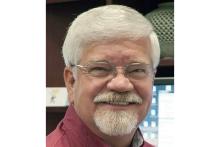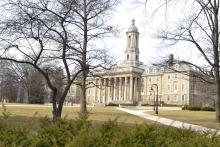Tom Nigl, doctoral candidate in materials science and engineering (MatSE) at Penn State, was awarded the Intercollege Graduate Student Outreach Achievement Award from the Graduate School for outreach efforts that promote science within society.f
Understanding polarized political opinions, predicting Arctic Sea ice levels, and accelerating quantum computing with machine learning — these are just a few focuses of the dozens of new Penn State research projects that have been funded by Institute for Computational and Data Sciences seed grants, in conjunction with supplemental funding from the colleges of Arts and Architecture, Earth and Mineral Sciences; Information Sciences and Technology; Education; and Engineering.
In retirement, Penn State Professor Gary Messing hasn’t moved far at all from a material that’s defined his 40-year career. He’s just seeing it from a different point of view.
It was late spring and Annie Taylor was beginning to wonder if she would ever get to see the results of her team’s work come to life.
When it comes to increasing electric storage efficiency and electric breakdown strength — the ability of an electrical system to operate at higher voltage and temperatures with great efficiency — increasing one traditionally has led to a decrease in the other.
A team of researchers from Penn State and NASA’s Jet Propulsion Laboratory (JPL) developed software that’s being used by engineers and scientists around the world to make advances in materials modeling, space technology development and data science.
With speed and ingenuity, more than 100 researchers across Penn State are shifting their research programs to address the COVID-19 crisis, thanks to funding from a seed grant initiative led by the Huck Institutes of the Life Sciences.
Four graduate students in the College of Earth and Mineral Sciences’ Department of Materials Science and Engineering (MastSE) were awarded 2020 Graduate Research Fellowships from the National Science Foundation.
Scientists have developed a new mechanism capable of harvesting wasted magnetic field energy and converting it into enough electricity to power next-generation sensor networks for smart buildings and factories.











